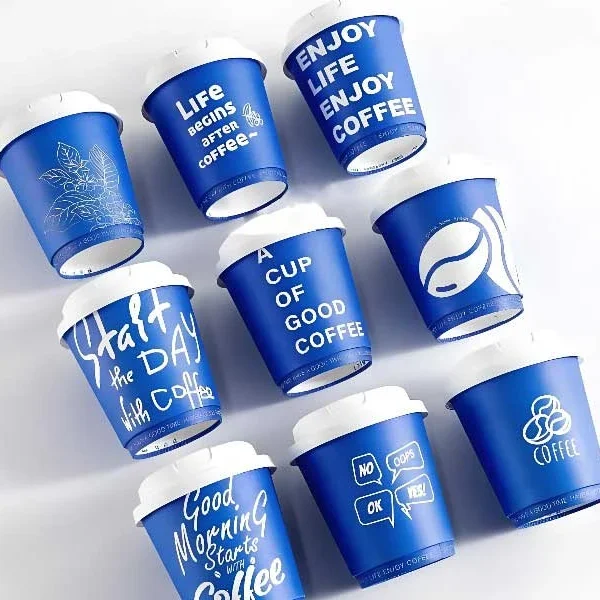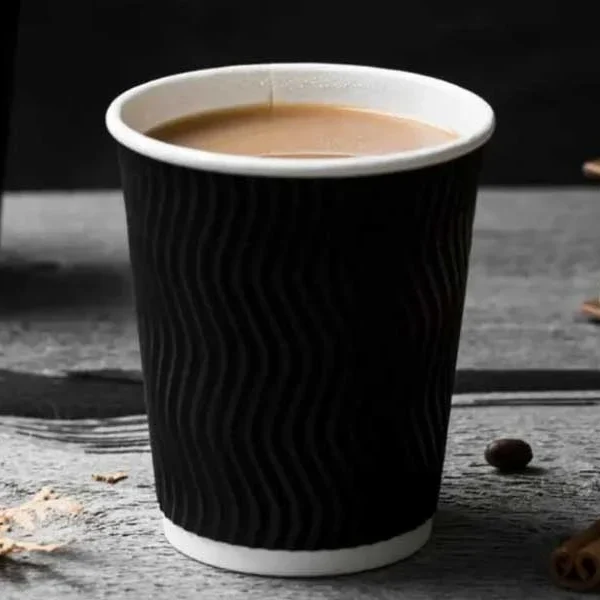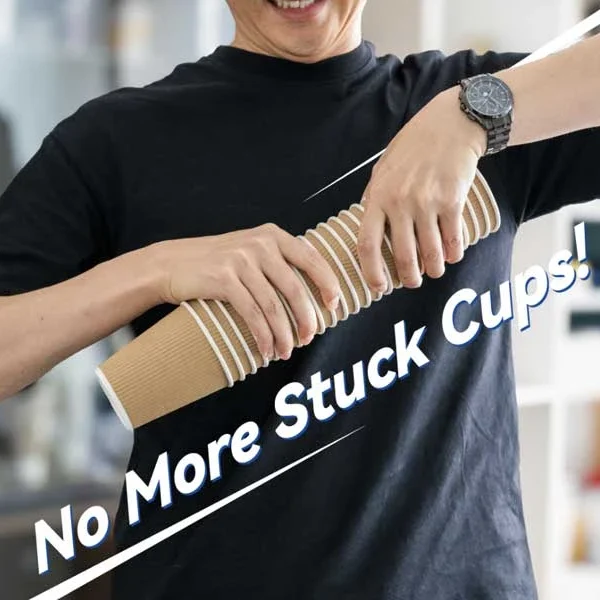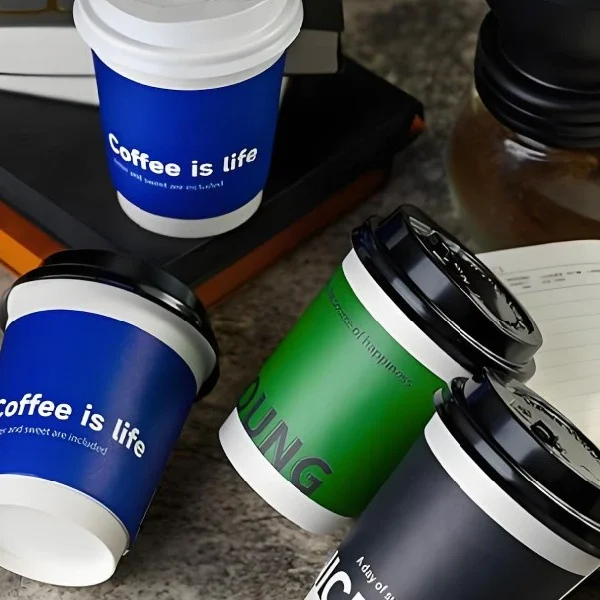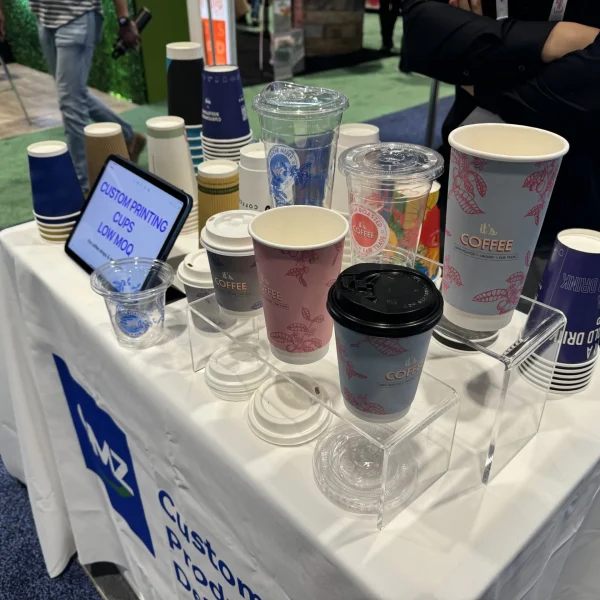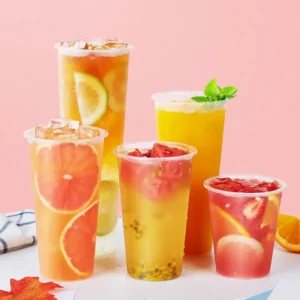Ripple wall coffee cups have become a popular choice for many cafes, restaurants, and consumers alike. These cups offer a range of benefits that make them stand out from other types of coffee cups. Choosing the right coffee cup is crucial for businesses aiming to provide the best customer experience and for consumers looking for convenience and sustainability. This article will delve into everything you need to know about ripple wall coffee cups, from their benefits to how to choose the right supplier.
What Are Ripple Wall Coffee Cups?
Ripple wall coffee cups are a type of disposable coffee cup composed of three layers of paper. Two premium layers of paper and one additional layer are folded into a ripple pattern. This ripple acts as an insulating layer, keeping the beverage inside hot while preventing the outside of the cup from becoming too hot to hold. They also eliminate the need for a separate coffee sleeve or double cupping, which is an advantage for both consumers and businesses in terms of cost and convenience.
Benefits of Using Ripple Wall Coffee Cups
✅ Keep coffee warm: They provide superior heat insulation, keeping your coffee warm for a longer period.
✅ Comfortable to grip: they offer increased comfort and safety because the ripple wall prevents the cup from becoming too hot to hold.
✅ Safe to hold: These cups are often more robust and sturdier than their single-wall counterparts, reducing the risk of spills or accidents.
✅ Looks good: The unique look of ripple wall cups can enhance the visual appeal of beverages and offer excellent branding potential.
✅ Green choice: The reduction in the use of coffee sleeves or double cupping has environmental benefits, as it leads to less waste. Additionally, many ripple wall cups can be recycled, although this process requires special facilities and effort to separate the plastic lining from the paper. Despite these challenges, it remains a more eco-friendly choice than plastic or foam cups.
Common Ripple Wall Cup Sizes
Ripple wall coffee cups come in various sizes to cater to different needs. The most common sizes include 8 oz, 12 oz, and 16 oz. These sizes are perfect for serving a range of hot beverages, from espressos and lattes to teas and hot chocolates. Ripple wall cups are ideal for cafes, restaurants, office events, and outdoor gatherings, providing versatility and convenience.
| Size (oz) | Volume (ml) | Typical Uses | Best For |
|---|---|---|---|
| 4 oz | 120 ml | Espresso shots | Cafes, specialty coffee shops |
| 8 oz | 240 ml | Standard coffee, tea, small lattes, cappuccinos | Quick-service cafes, takeaways, offices |
| 12 oz | 360 ml | Regular lattes, cappuccinos, mochas, hot chocolates | Full-service cafes, restaurants, events |
| 16 oz | 480 ml | Large lattes, large teas, americanos, iced coffee | Cafes, coffee shops, restaurants, outdoor events |
| 20 oz | 600 ml | Extra-large coffees, large teas, iced coffees, cold drinks | Coffee chains, large cafes, events |
Ripple Wall Cups vs. Other Disposable Coffee Cups
When choosing disposable coffee cups, understanding the differences between various types can help businesses make informed decisions. Here’s a comparison of ripple wall paper cups with other common disposable cup types:
Single-Walled vs. Ripple-Walled Cups
- Cheaper but lack insulation.
- The potential need for additional cup sleeves might add up to the overall cost.
Use Case: Single-walled cups are suitable for quick, low-cost serving of hot beverages, but may not be ideal for high-volume or high-quality service. Ripple-walled cups provide a better experience for customers who value comfort and quality.
| Single-Walled Paper Cups | Ripple-Walled Paper Cups | |
|---|---|---|
| Insulation | Basic insulation, often requires a sleeve | Excellent insulation due to the ripple layer |
| Grip | Smooth surface, less grip | Textured surface provides enhanced grip |
| Comfort | Can be hot to hold | Remains cool to the touch |
| Cost | Low | high |
Double-Walled vs. Ripple-Walled Cups
- Better insulation than single-wall but can be more expensive.
- Slightly cheaper than ripple-wall but but lacks the grip and aesthetic of ripple-wall.
Use Case: Double-walled cups are excellent for serving high-quality drinks where keeping the beverage hot is essential. Ripple-walled cups also insulate well, but they have the added benefits of being easier to hold due to their textured surface and standing out visually, which makes them great for businesses that want to enhance their branding.
| Double-Walled Paper Cups | Ripple-Walled Paper Cups | |
|---|---|---|
| Insulation | Good insulation, dual layers | Excellent insulation, air trapped in ripple layer |
| Grip | Smooth surface, less grip | Textured surface provides superior grip |
| Comfort | Comfortable to hold | Comfortable and cool to the touch |
| Cost | High | Slightly higher than double-wall |
Foam Cups vs. Ripple-Walled Cups
- Cheaper, good insulation but environmentally unfriendly.
Use Case: Foam cups are inexpensive and insulate well but are not eco-friendly. Ripple-walled cups provide a more sustainable option with similar insulation and a better grip, suitable for eco-conscious businesses.
| Foam Cups | Ripple-Walled Paper Cups | |
|---|---|---|
| Insulation | Excellent insulation | Excellent insulation |
| Grip | Smooth surface, less grip | Textured surface provides enhanced grip |
| Comfort | Comfortable to hold | Comfortable and cool to the touch |
| Cost | Low cost | Slightly higher cost |
| Environmental Impact | Not environmentally friendly | Made of renewable materials |
Frequently Asked Questions
Yes, many paper cup manufacturers offer custom printing services for rippled wall cups. Here at GMZ, we even support up to 8 colors in custom printed coffee cups and experience in various printing methods to best print out your logo, design, pattern, be it simple or intricate.
Yes, at GMZ, you can choose between kraft or white paper for your ripple wall cups. You even have the option to select different GSMs for each paper layer, which allows you to achieve the desired effect at the optimal budget.
Yes, ripple wall cups are recyclable, but they often require facilities that can separate the plastic lining from the paper cup. The paper part of the cup is biodegradable and can decompose over time. However, the plastic lining inside the cup is not biodegradable and needs to be removed before composting.


